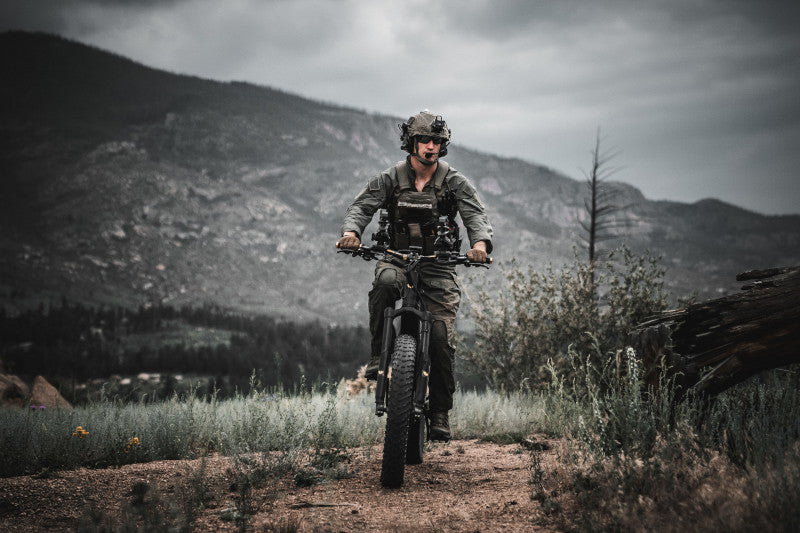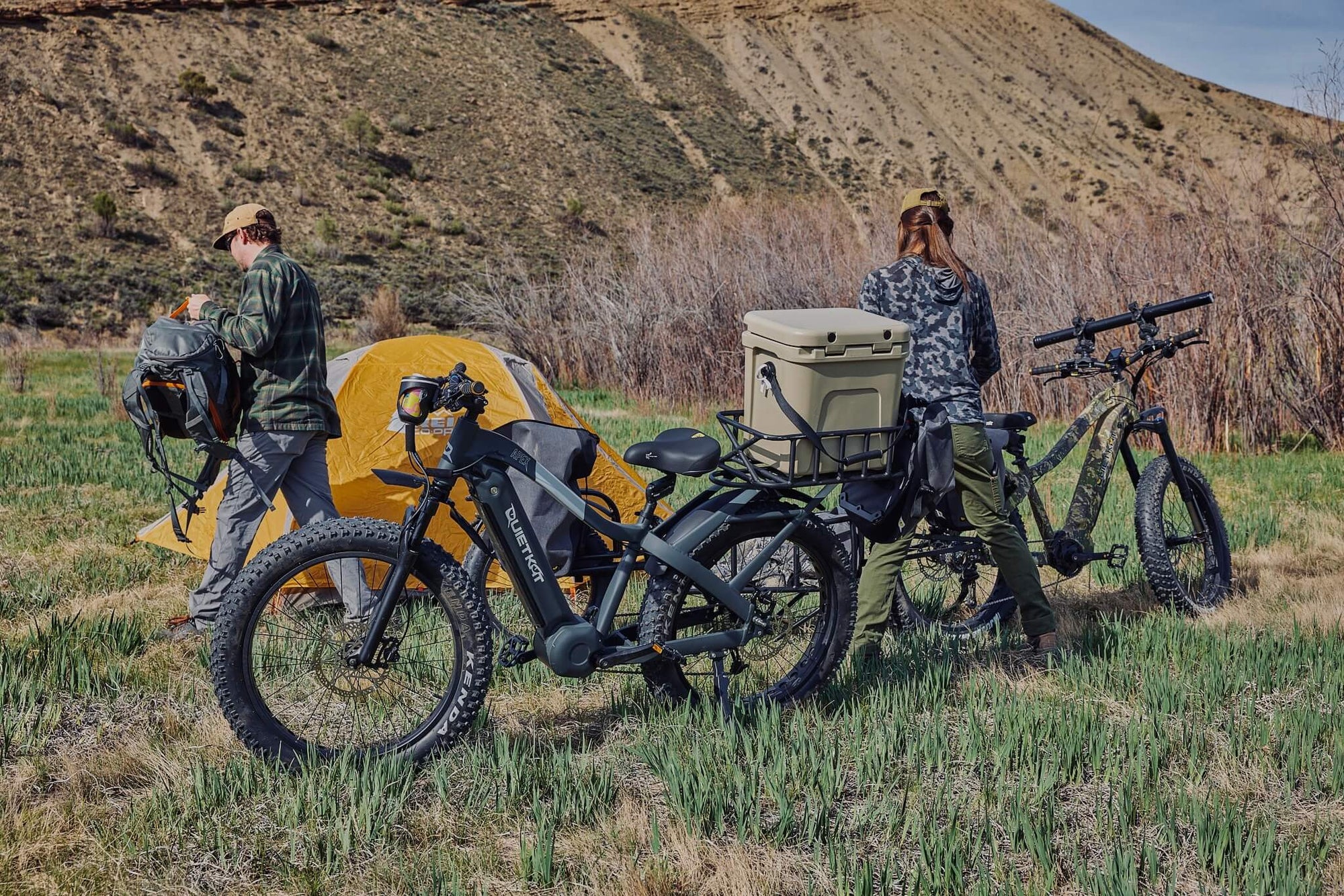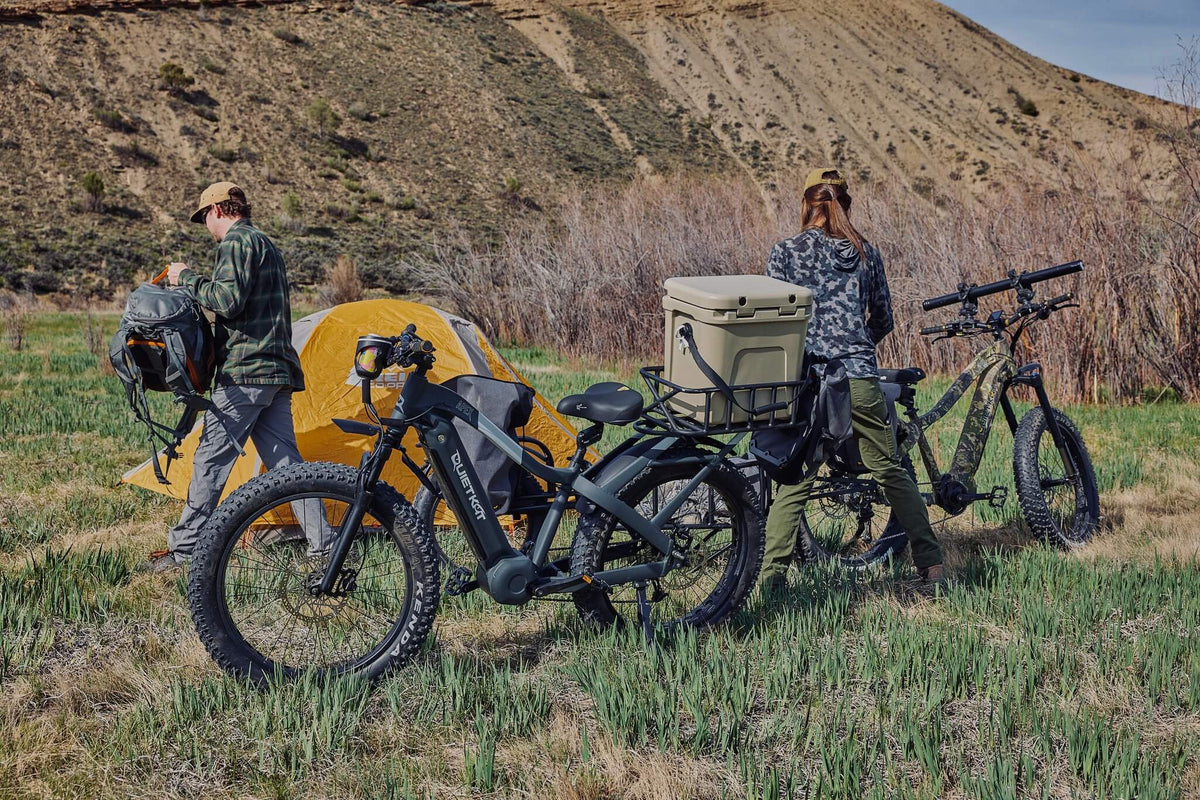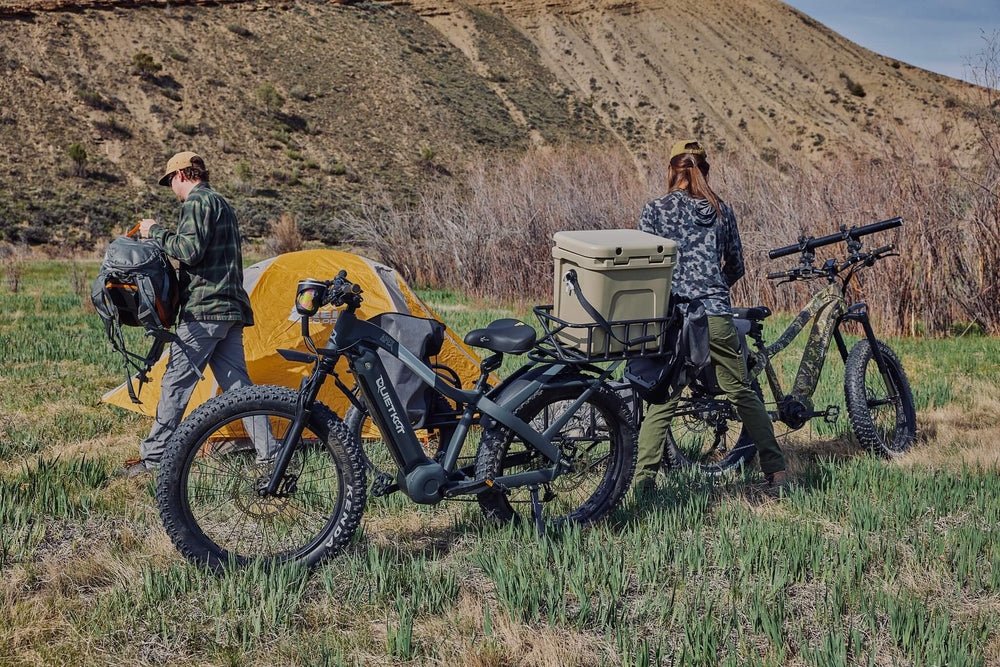U.S. Electric Bike Regulations
What makes a bike street legal? Do I need a license for an electric bike? Access QuietKat's helpful guide to Class 3 Electric Bike Laws and the latest US Electric Regulations to get answers to all your questions.
Whether you're a seasoned eBiker or a newbie, every rider should be aware of the local and U.S electric bike regulations in their state.
Anyone who is considering purchasing an electric bicycle should understand their legal riding limits. Even veteran eBikers may benefit from a refresher on eBike regulations, as several states have changed their classifications as recently as 2020.
If you're new to eBiking, you're not alone; eBikes have become increasingly popular across the U.S. in the last decade. EBike popularity has outpaced U.S electric bike regulations and left many states playing catch-up.
EBikes have grown in popularity as a fun way to explore outside and an eco-friendly alternative to car-based trips. Electric bikes are popular for recreation, fitness, and commuting. Bikes like those from QuietKat can even go off-road as high-performance electric mountain bikes. EBikes are increasingly replacing ATVs as the vehicle of choice for hunting, angling, or Overlanding.
The eBike market grew over 23%-over-year in 2020, with the market projected to grow even more in the next ten years. People across the country continue to discover the benefits of electric bikes to enhance their everyday activities or as an opportunity to explore new terrain. Public Lands organizations also acknowledge the benefits of eBikes and are expanding access to riders across national parks, forests and wilderness areas.
Several U.S. states are still adapting to this rapid growth in popularity and are navigating the implementation of eBike regulations and classifications. Some states have strict laws for electric bikes, while in other states, eBikes lack a specific vehicle classification, and it's not clear how they are regulated.
Before you hop on your QuietKat eBike, be sure you understand the current regulations in your state and for anywhere else you plan to ride. QuietKat bikes are great for all-terrain riding, and in most states, they can go almost anywhere off-road vehicles can go. However, if you want to commute on your eBike or ride in the city, you may face a different set of regulations.
Overview of U.S. electric bike regulations
Which states define an electric bicycle?
EBike definitions and classification is becoming increasingly common across the U.S. 48 states currently have definitions for eBikes. State legislation usually focuses on whether eBikes classify as traditional bikes, mopeds, or scooters, but definitions still vary across other states.
Adoption of a board tired classification is growing across the country. These 39 states now define eBikes within three standard classes: Arizona, Arkansas, California, Colorado, Connecticut, Florida, Georgia, Idaho, Illinois, Indiana, Maine, Maryland, Michigan, North Dakota, Missouri, New Mexico, Minnesota, Idaho, Nebraska, Kansas, Alabama, Massachusetts, Mississippi, New Hampshire, Nevada, New Jersey, Delaware, New Jersey, Ohio, Oklahoma, South Dakota, Tennessee, Texas, Utah, Virginia, Washington, West Virginia, Wisconsin, and Wyoming.
Eighteen states classify eBikes using unique definitions; these states are Hawaii, Oregon, Montana, Kentucky, North Carolina, South Carolina, Washington DC, and Rhode Island.
Eleven states or territories currently have no definitions for eBikes.
Alaska, Puerto Rico, U.S Virgin Islands, Guam, American Samoa, and the Northern Mariana Islands.
What are the different eBike classifications?
Twenty-six states have adopted a three-tiered classification that designates eBikes as either Class 1, 2, or 3. Ebikes span a wide gap between analog bikes and dirt bikes, and the tiered system of eBike regulations recognizes this. It differentiates between eBike models with varying speed and power capabilities.
Class 1 and 2 bikes are the most common class of eBikes for recreational riders who enjoy mountain biking, hunting, or exploring outdoors. Class 3 eBikes are typically designed to replace a moped or motorcycle and are best suited to urban road use.
States which use the three-tiered classification have near-identical definitions for eBikes, as well as eBike safety and operation requirements.
Three-Tiered Classification:
Class 1:
An eBike is considered Class 1 when it has a top speed of 20 miles per hour and an electric motor that works only with pedaling (pedal assist).
Class 2:
An eBike will fall into Class 2 if equipped with a throttle-actuated motor. That motor must cease to assist when the eBike reaches 20 miles per hour.
Class 3:
A Class 3 eBike is a bicycle with a motor that provides assistance only if the rider is pedaling and should cease to assist when the eBike reaches 28 miles per hour. Class 3 eBikes are also known as pedelec bikes. Class 3 is the most restricted classification, and some states impose additional safety restrictions for riders on Class 3 cycles.
Is there a speed limit on eBikes in the United States?
Are you feeling a need for speed? The federal speed limit for eBikes is 20 miles per hour or less under motor power alone.
The tiered classification system, adopted by many states, also specifies this speed limit. That classification sets 20 miles per hour as the legal limit for Class 1 & 2 bikes. Class 3 bikes are limited to speeds up to 28 miles per hour.
The federal law acknowledges and allows for eBikes to travel faster when the rider uses a combination of human pedal and motor power. Local speed restrictions may also apply in specific areas.
Although some states have a specific speed limit for electric bikes, riders should also observe the local speed limits when on roads. Although many bikes can reach 30 miles per hour, you should follow the local limits if they are lower in areas such as school zones.
How old do you have to be to ride an eBike?
Age restrictions for eBikes vary from state to state and are often only applicable to Class 2 or Class 3 electric bikes.
It is best to check the laws specific to your state to see age restrictions. Some states require riders to be over a certain age, while other states only have age requirements for certain classes of eBikes, and some states have no age restrictions.
What states enforce eBike registration?
Most states that define eBikes as vehicles or on the same basis as mopeds will require riders to meet the state's specific registration requirements. States currently requiring eBike registration are Alabama, Alaska, Hawaii, Louisiana, Massachusetts, New Mexico, North Dakota, Wisconsin, and West Virginia.
Which states have helmet requirements?
Within the U.S.A, 25 states and Washington D.C. currently have helmet requirements for eBike riders and passengers. Five states, Connecticut, Maryland, West Virginia, Massachusetts, and Louisiana, require helmets for all ages and across all eBike classes and bicycles.
Electric bicycle helmet laws across other states can be confusing as they are often specific to particular eBike classes or age groups. However, 25 states have no helmet requirements for any class of eBike or riders of any age.
Typically, states which follow the tiered classification system require helmets at minimum for anyone riding a Class 3 eBike. But helmets are often required for younger riders on other bike classes as well.
Most states which require helmets will accept bicycle helmets. However, Alabama requires a motorcycle helmet because it defines every eBike as a motor-driven cycle. While helmets aren't legally required in all states, QuietKat does recommend helmets for all eBike riders in the interest of eBike safety.
Helmet laws by age
Around half the states in the U.S currently require children to wear helmets on eBikes at least until they reach a certain age. Helmet regulations most commonly apply only when the rider is under 21, but usually specifically for riders under 14 or 16. Around half of the states in the U.S. require children and teenagers to wear helmets, although we recommend that all children wear helmets even if not legally required.
Delaware, Florida, Maine, North Carolina, Tennessee, Virginia and Maryland, and Montana require any eBike Rider or their passenger under 16 years of age to wear a helmet.
Indiana, Kansas, Kentucky, and New Mexico require anyone under 18 to wear a helmet when on an electric bicycle.
Other states differ on the age up to which they require helmets. Oklahoma has a helmet law for anyone under the age of 19. In New Jersey, all bike riders under 17 must wear a helmet. In West Virginia, bike riders under 15 must wear a helmet and, in New York, bicycle riders under 14 are required to wear a helmet. In Louisiana and Pennsylvania, riders under the age of 12 must wear a helmet.
What states require a license to ride an eBike?
In States where eBikes are classified as mopeds or scooters, they usually require licensing and registration. Alabama, Alaska, Massachusetts, Missouri, New Mexico, Wisconsin, and North Dakota currently require a license to operate an eBike. States using the three-tiered classification system usually exempt electric bikes from registration, licensure, or insurance requirements.
Do I need insurance to ride an eBike?
States which consider eBikes as distinct from motor vehicles do not require the insurance requirements that standard motor vehicles are subject to.
Several states see eBikes as motor vehicles akin to mopeds and require the same license and registration requirements. However, most of those states do not require eBike insurance. Although driver's insurance is rarely needed, you may wish to add your electric bike to your home and contents insurance to protect against theft or damage.
Where can I use my electric bike?
Each state has different rules about eBike access, and federal land rules also vary.
Roads, sidewalks, and bike paths
Delaware, Iowa and Nebraska, and Vermont all define electric bicycles as on-par with bicycles. Therefore eBikes can operate on any trails and paths where bicycles are allowed. Hawaii's law does not have any specific restrictions on where e-bikes can be used.
Of the 43 states and D.C. that define eBikes, some state laws, such as in Arizona, Minnesota, Utah, and Washington, specifically allow for eBikes to operate on sidewalks and bicycle paths. However, local governments in these states have the power to impose additional restrictions. Class 3 bikes are more commonly restricted on bike paths and sidewalks as these bikes are allowed to go faster, making them better suited to road use and popular with eBike commuters.
In the following states, eBikes may be operated on roads but can not be used on sidewalks or bike paths: Alabama, Alaska, Iowa, Kansas, Kentucky, Louisiana, Massachusetts, Minnesota, Missouri, Nebraska, North Dakota, Oklahoma, Vermont, West Virginia, Wisconsin. Some cities or local authorities may have exceptions to these regulations.
In Florida, eBikes are allowed on sidewalks but are not permitted on bike paths when using human power alone.
Where can electric mountain bikes and electric hunting bikes ride?
Off-road areas are different from pavements. So, where can electric mountain bikes ride? Generally, any natural surface trail designated for motorized and non-motorized use is open to electric mountain bikes (eMBTs). Natural surface trails can include motorized singletrack, doubletrack, and primitive roads.
However, riders shouldn't assume that eclectic mountain bikes are allowed everywhere traditional mountain bikes are. Access on singletrack is usually regulated differently from access to paved and soft surface bike lanes or bike paths. People For Bikes have compiled a handy eMBT ride finder with over 42,000 miles of fun routes and trails cataloged to help riders find tracks.
eBike usage amongst hunters is steadily increasing as enthusiasts discover the benefits of eBiking for off-road excursions. Electric bikes allow hunters or anglers to stealthily access more remote areas which would otherwise be out of limits.
If you enjoy using an electric hunting bike, you may wonder what rules apply and how they differ from an ATV or a quad bike. Most states allow bikes in class 1 and class 2 for hunting areas. However, in Pennsylvania, only class 1 bikes are allowed. QuietKat hunting bikes are ideal for use when hunting or Overlanding and are built to go almost anywhere an ATV can go.
In national parks, electric bicycles are usually allowed wherever traditional bicycles are also allowed. However, the access allowed for cyclists varies from one park to another. Usage rules by the state are complex and varied, so it's worth checking your local guidelines. Don't ride your eMTB in wilderness areas where the local regulations are unclear. Ride legally and safely only on authorized trails.
What are the rules for electric bikes in National Forest, BLM land, and National Parks?
Until recently, most non-motorized routes within federal lands prohibited bikes with electric motors.
However, in 2019 several agencies expanded access to eBikes on public lands; these included The Bureau of Land Management (BLM), National Park Service (NPS), Fish and Wildlife Service, and Bureau of Reclamation. From August 29th, 2019, all eBikes up to 750 watts (class 1 & class 2) can now access Federal Lands and national parks.
Ebikes advance the NPS's "Healthy Parks Healthy People" goals and have been acknowledged as a positive way to expand access to national parks. They are also viewed as being a beneficial way to reduce congestion and vehicle emissions in national parks.
Generally, electric bikes in national parks and public lands are now allowed access wherever traditional bicycles are permitted. Under Federal statute, both conventional bicycles and electric bikes remain prohibited in wilderness areas within national parks.
Bicycles are also allowed on administrative roads, which may be closed to public motor vehicles but open to motor vehicle use by the NPS. Access to these roads is determined on a per park basis, where local superintendents have decided eclectic bikes will not disturb wildlife or park resources. Some parks also allow additional access to eBikes on paths where mobility devices like wheelchairs are permitted.
Despite expanded recreational opportunities and accessibility rules for electric bikes on public lands, they still vary for specific trails and classes of eBike.
Riders should follow local jurisdictions' rules and look up the rules for specific national parks and forests when planning their trips.
In which states are 1000W Ebikes legal?
Six states specifically allow eBikes to have a max power of 1000W; these are Georgia, Kansas, Minnesota, Oklahoma, Oregon, and Virginia. Only two states, Florida Mississippi, currently have no max power limit for electric bikes.
High-powered eBike motors are available, ranging from 1000W-6000W. However, most states cap power at either 750W or 1000W. Once an electric bicycle reaches 1000w, it is more likely to be classified as a moped or scooter. Therefore, many states cap eBike outputs at less than 1000W.
Sixteen states cap eBikes at a max power of 750W; these are; Arkansas, California, Colorado, Delaware, Iowa, Maine, Michigan, Missouri, Nevada, New Hampshire, North Carolina, Pennsylvania, Texas, Utah, Washington, and Wisconsin. Maryland has one of the strictest limits, at 500W.
Other safety considerations
It's worth adopting the three-tiered system for general electric bike safety if you are in a state with no current electric bike regulations. Helmets are also highly recommended for riders of all ages, even if your state does not legally require them.
Riders of both electric and traditional bikes should make themselves highly visible, especially if you plan to use busy roads. Remember that electric bikes are still relatively new, so other motorists may not be used to sharing the road with eBikes and may struggle to gauge how fast you are traveling.
We highly recommend wearing a reflective vest and using flashing headlights and tail lights when riding at night. Bright clothing can also help make you more visible to other motorists during the daytime.
Whenever you use an electric bike on the road, you should observe local road rules, such as stopping entirely at stop signs, keeping a safe distance from other vehicles, and using your hand signals when turning.
With rules and regulations changing rapidly, the eclectic bike community as a whole must show consideration for other cyclists, pedestrians, trail, and road users. Take care of slower-moving vehicles or pedestrians, and be sure to share trails and paths. A good reputation will help electric bike riders advocate for greater access to public spaces.
Ready to ride?
eBike regulations are complex, but once you've done your research, you can hit the trails or road with confidence, knowing that you're not breaking any rules.
QuietKat bikes are best suited to off-road terrain, where riders have more freedom from regulations. Although our bikes are certainly street-worthy, they're equipped for Overlanding adventures. Our bikes vary from class 1 to class 3, with modifications available on some models. Our range offers our riders the greatest flexibility in choosing a bike that is both trail and street legal in their state. Explore the full range now.
EBike definitions & classifications by state:
An overview of the definitions per state is provided below, but further information on state-by-state safety and eBike regulations is found elsewhere in this article.
State electric bike rules and regulations change regularly. We recommend you check your local laws periodically so you can legally enjoy the benefits of riding your electric bicycle.



 USA
USA Canada
Canada








